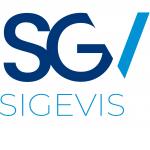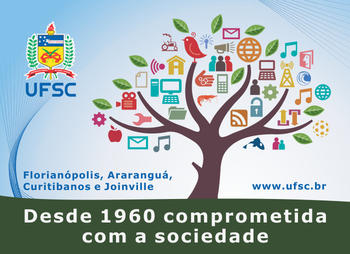The aim of this study was to evaluate the risks in relation to repetitive movements of the upper limbs in a poultry slaughterhouse, as well as analyze the effects of a reduced work pace on the risk levels. The study was conducted in a slaughterhouse with 1,500 workers, who were divided into two shifts, where 150,000 chickens were slaughtered daily. The OCRA checklist was implemented to assess 10% of the total workforce. The Student t-test was applied to examine the difference between the risks of both sides of the body (p ≤ 0.05). The 14 analyzed work tasks were from the sectors: cutting (8), packing (5) and reception (1). The workers performed 72.8 ± 15.3 actions per minute (10/10 points on the OCRA scale). The average score of the OCRA checklist was 23.4 ± 4.4 (high risk). The scores for the right upper limb (23.1 ± 4.8 – high risk) were not significantly different (p = 0.175) than the left (21.8 ± 5.2 – moderate risk). Considering the five risk categories of the OCRA method, 10 tasks were deemed high risk (71%) and 4 presented moderate risk (29%). By conducting simulations, it was possible to reduce the risk to a very low level in 13 of the 14 tasks by only decreasing the work pace (−56.9 ± 10.4%). In this way, simulations of a reduced work pace showed the effectiveness of this organizational measure in lowering the risk of UL-WMSD.
-
Treinamento para Técnicos da Secretaria de Saúde do Estado do Paraná
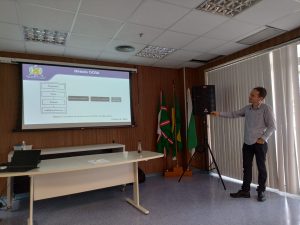

O pesquisador Dr. Diogo Cunha dos Reis apresentou resultados do projeto SIGEVIS durante uma “Capacitação em Vigilância da Saúde do Trabalhador de Frigoríficos”, realizada no dia 29 de novembro de 2022, no auditório da 2ª Regional de Saúde do Estado do Paraná, em Curitiba – PR. Participaram do evento técnicos das 22 Regionais de Saúde que atuam em Saúde do Trabalhador no Estado do Paraná.
-
Meio Ambiente do Trabalho em Frigoríficos – Atuação
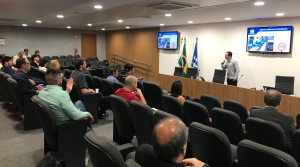 CURSO PARA PROCURADORES E PERITOS DO MPT
CURSO PARA PROCURADORES E PERITOS DO MPTNo período de 8 a 10 de agosto, o pesquisador Dr. Diogo Cunha dos Reis ministrou o curso de aperfeiçoamento “Meio Ambiente do Trabalho em Frigoríficos – Atuação” na Escola Superior do Ministério Público da União – ESMPU, em Brasília, no qual apresentou os resultados obtidos pelo projeto SIGEVIS. Participaram do treinamento 30 membros do Ministério Público do Trabalho, incluindo procuradores e peritos. Link do Evento: ESMPU
-
AHFE 2022 – International Conference on Applied Human Factors and Ergonomics
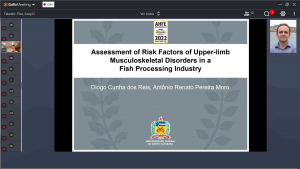
Apresentação dos resultados do projeto SIGEVIS durante a 13th Convenção Internacional sobre Fatores Humanos e Ergonomia, acontecido de forma híbrida no Hotel Sheraton de Nova York, NY, em 24 a 28 de julho de 2022. O artigo do trabalho encontra-se publicado no livro Physical Ergonomics and Human Factors (ISBN: 978-1-958651-39-1) e pode ser acessado na íntegra através do link http://doi.org/10.54941/ahfe1002601.
-
Conferência Internacional AHFE 2022 – Nova York, EUA
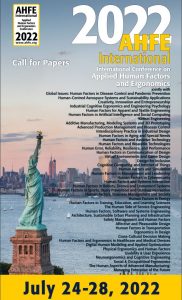 Assessment of Risk Factors of Upper–limb Musculoskeletal Disorders in a Fish Processing Industry
Assessment of Risk Factors of Upper–limb Musculoskeletal Disorders in a Fish Processing Industry
Diogo Cunha dos Reis & Antônio Renato Pereira Moro
Federal University of Santa Catarina Florianópolis, SC, BrazilThe aim of this study was to evaluate the risks in relation to the workers’ repetitive upper–limb movements, as well as analyze the effects of a reduced work pace on the risk levels in a fish processing industry. The study was conducted in a Brazilian fish processing industry with 1,900 workers, who were divided into two work shifts. The OCRA checklist was used to assess 10% of the total workforce during work tasks. The 13 main work tasks (homogeneous groups) of the productive sector were analyzed. The occupational repetitive actions performed by workers were 81.5 ± 19.2 per minute, representing 10 points on the OCRA scale (0–to–10–point scale). The average OCRA checklist score was 18.4 ± 2.9 (moderate risk). The scores for the right upper limb (18.3 ± 2.8 – moderate risk) were significantly higher than the contralateral limb (16.0 ± 4.2 – moderate risk) (p = 0.014). Considering the five risk categories proposed by the OCRA method, 12 tasks were deemed moderate risk (92%) and 1 low risk level (8%). Due to the predominance of the highly repetitive upper–limb movements in fish processing work, and previous studies suggesting a reduced work pace to prevent UL–WMSDs, simulations of a pace with very low risk levels were carried out utilizing the OCRA checklist. By conducting these simulated interventions, it was possible to reduce the UL–WMSD risk to very low levels in all tasks by only decreasing the work pace (–42.8 ± 17.7%). These results suggest that most of the tasks that workers performed were classified as moderate risk, predisposing workers to a greater probability of developing UL–WMSDs (10.8 to 21.5%) than the population that was not exposed. Simulations of a reduced work pace showed the effectiveness of this organizational measure in lowering the risk of UL–WMSDs.
Keywords: Risk Assessment, Ergonomics, Work Pace, Fish Processing, OCRA -
IEA 2021 – Vancouver, Canada
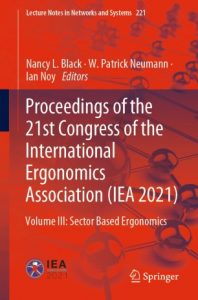 Reduced Work Pace in a Poultry Slaughterhouse
Reduced Work Pace in a Poultry SlaughterhouseAbstract
-
Seminário em Sidrolândia/MS
 Pesquisador Diogo Reis, do Projeto SIGEVIS, durante sua participação no seminário “Avaliação das condições de trabalho na JBS de Sidrolândia-MS”.
Pesquisador Diogo Reis, do Projeto SIGEVIS, durante sua participação no seminário “Avaliação das condições de trabalho na JBS de Sidrolândia-MS”.Na oportunidade, foram discutidas as condições de trabalho no setor de abate e processamento de carnes de maneira geral e particularidades da unidade da JBS de Sidrolândia. Além de participar dos debates ocorridos, Dr. Diogo apresentou resultados do projeto SIGEVIS, a respeito do ritmo de trabalho em indústrias de abate e processamento de aves, aos dirigentes sindicais de Sidrolândia/MS.
-
SISTEMA INTEGRADO DE GESTÃO ERGONÔMICA E VIGILÂNCIA EM SAÚDE EM EMPRESAS DE ABATE E PROCESSAMENTO DE CARNES
Este projeto integra uma iniciativa de estudo em segurança e saúde em empresas de abate e processamento de carnes com o objetivo de proporcionar elementos para a adequação das condições de trabalho atendendo a necessidades tanto do ponto de vista estratégico quanto legal. Estratégico, pois trata da certificação corporativa em segurança e saúde conforme normas ISO e OSHA; legal, pois busca o
 atendimento das Normas Regulamentadoras, dentre as quais a NR-36, NR-17, NR 04, NR 07 e NR 15. Nesse contexto, pretende-se estabelecer um novo olhar para as questões que circunscrevem o trabalho no setor de frigoríficos no Brasil. Dentre outros fatores, a ideia principal é estruturar um banco de dados, informações e publicações científicas, que permitam a devida avaliação e adequação das condições de trabalho nas empresas de abate e processamento de carnes.
atendimento das Normas Regulamentadoras, dentre as quais a NR-36, NR-17, NR 04, NR 07 e NR 15. Nesse contexto, pretende-se estabelecer um novo olhar para as questões que circunscrevem o trabalho no setor de frigoríficos no Brasil. Dentre outros fatores, a ideia principal é estruturar um banco de dados, informações e publicações científicas, que permitam a devida avaliação e adequação das condições de trabalho nas empresas de abate e processamento de carnes.

